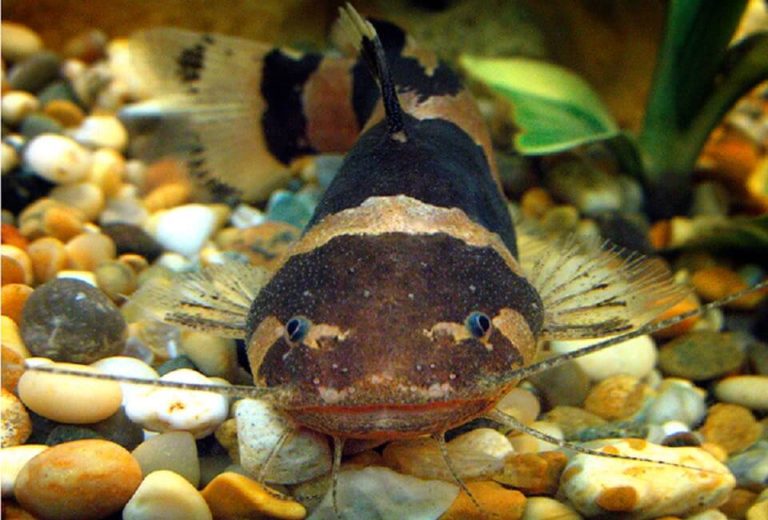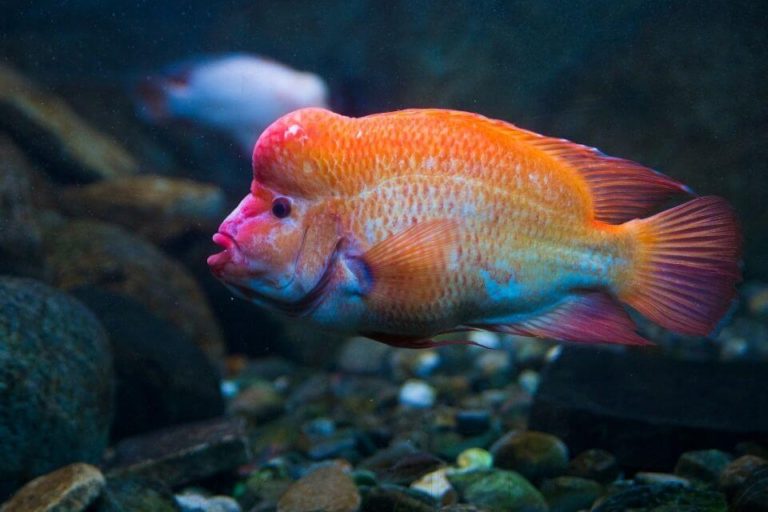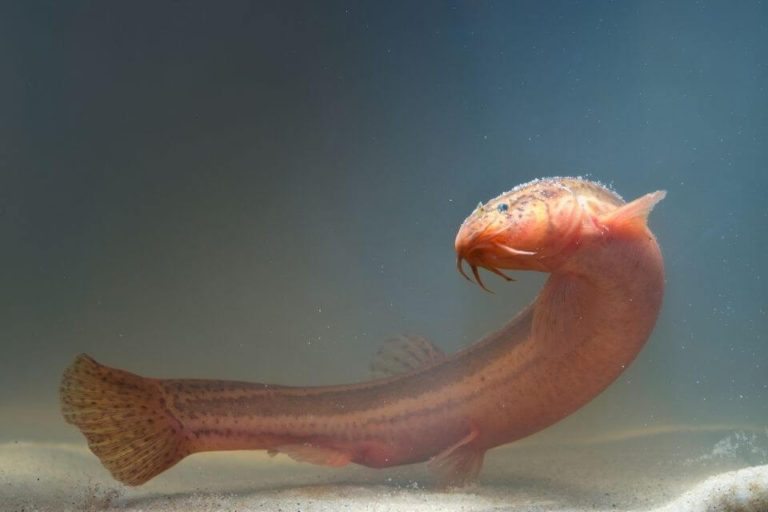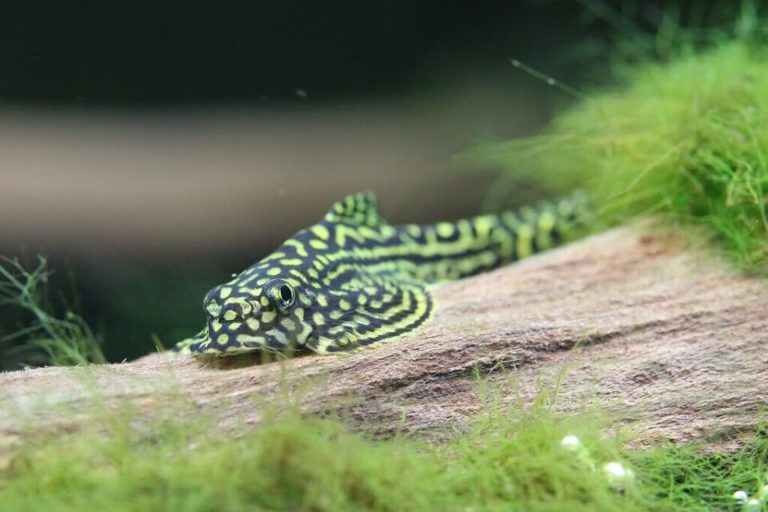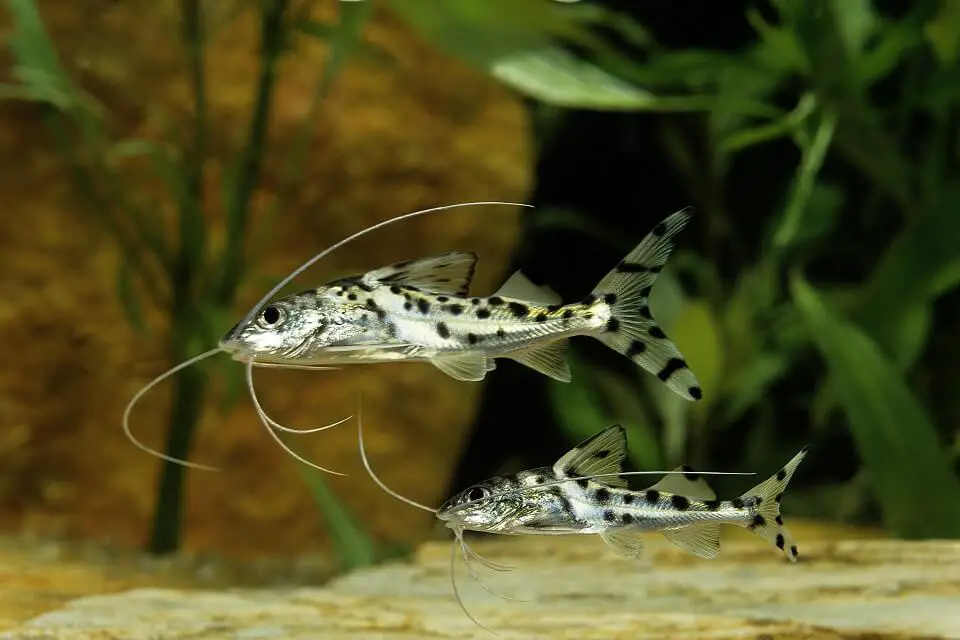15 Beginner Friendly Goldfish Breeds: A Comprehensive Guide

Goldfish have long captivated the hearts of fishkeeping enthusiasts around the world. Their vibrant colors, elegant fins, and peaceful nature make them an excellent choice for beginners looking for a freshwater fish to begin with.
In this article, we will delve into the fascinating world of Goldfish and explore some of the best beginner-friendly Goldfish breeds to choose from.
From the classic Common Goldfish to the eye-catching Bubble Eye, let’s discover the unique characteristics and care requirements of these stunning aquatic companions.
Common or Comet Goldfish
Commonly known as the Comet Goldfish, the Common Goldfish is the embodiment of the classic goldfish image. Its sleek body shape, single tail, and vibrant colors make it instantly recognizable and beloved by fishkeeping enthusiasts worldwide.
The Common Goldfish is considered the quintessential goldfish breed and has been a popular choice for beginners for generations. One of the key advantages of the Common Goldfish is its remarkable hardiness.
It can adapt to a wide range of water conditions, making it more forgiving for novice fishkeepers who are still learning the ropes of maintaining optimal aquarium parameters.
This resilience makes the Common Goldfish an ideal choice for those taking their first steps into the fishkeeping hobby.
Another notable characteristic of the Common Goldfish is its potential for growth. While it starts as a small fish, it can grow quite large over time, often exceeding a foot in length.
This growth potential adds to the allure of keeping a Common Goldfish, as it allows owners to witness the transformation and development of their aquatic companion.
However, it’s crucial to consider the long-term requirements of these fish, including providing them with adequate swimming space in a sufficiently sized tank or a pond.
The Common Goldfish’s adaptability extends to its habitat requirements. It can thrive in both indoor aquariums and outdoor ponds, making it a versatile choice for beginners with different preferences.
For those with spacious tanks or access to a pond, the Common Goldfish can truly showcase its natural beauty and exhibit its full potential.
When it comes to care, the Common Goldfish is relatively low-maintenance compared to some other goldfish breeds. However, it’s important to ensure a well-maintained and properly cycled aquarium or pond.
Regular water testing and maintenance routines, such as water changes and filter maintenance, are essential to keep the water quality in check and provide a healthy environment for the fish.
Feeding a Common Goldfish is relatively straightforward as well. They are omnivorous and can thrive on a diet of high-quality goldfish pellets or flakes, supplemented with occasional treats like frozen or live foods.
It’s important not to overfeed them and to provide a balanced diet to maintain their health and prevent digestive issues.
On the other hand, the Common Goldfish, or Comet Goldfish, holds a special place in the hearts of fishkeeping enthusiasts as the quintessential goldfish breed.
Its sleek body, single tail, hardiness, and potential for growth make it an excellent choice for beginners seeking a traditional goldfish experience.
Whether kept in a well-maintained indoor aquarium or a spacious outdoor pond, the Common Goldfish is sure to bring joy and beauty to any aquatic environment.
With proper care, attention, and suitable habitat, this iconic goldfish breed can flourish for many years, delighting its owners and captivating the eyes of all who behold it.
Fantail Goldfish

For those captivated by the beauty of graceful, flowing fins and a rounded body, the Fantail Goldfish is a true delight. With its mesmerizing appearance, the Fantail Goldfish has become a favorite among fishkeeping enthusiasts worldwide.
This stunning goldfish breed is characterized by its unique double tail, which sets it apart from other varieties. Available in a wide array of colors, the Fantail Goldfish offers a captivating visual spectrum that can complement any aquarium.
The Fantail’s distinct feature, the double tail, creates a sense of elegance as it gracefully moves through the water. The flowing fins give the fish a sense of fluidity and add an extra dimension to its visual appeal.
Watching a Fantail swim is like witnessing a graceful ballet performance, making it a true pleasure for both novice and experienced fishkeepers alike.
When it comes to ease of care, Fantail Goldfish are generally considered hardy and adaptable, making them an ideal choice for beginners.
They are more forgiving of variations in water conditions compared to some other goldfish breeds, making it easier for new fishkeepers to maintain a suitable environment for their aquatic companion.
However, it’s important to note that while Fantails are hardy, they still require proper care and attention to thrive.
Like other goldfish breeds, Fantails appreciate spacious tanks that allow them to move and swim freely. A larger tank with ample swimming space will enhance their well-being and showcase their graceful movements.
Good filtration and regular maintenance are essential to maintain optimal water quality and keep the tank environment healthy for the fish.
Fantails are known for their vibrant colors and patterns. They come in a wide variety of shades, including solid colors like red, orange, black, and white, as well as beautiful calico patterns.
This diversity in coloration allows fishkeepers to choose a Fantail that best suits their personal preferences and complements the overall aesthetics of their aquarium.
Feeding Fantail Goldfish is relatively simple. They are omnivorous and can thrive on a balanced diet of high-quality goldfish pellets or flakes. It’s important to provide them with a variety of foods to ensure proper nutrition.
Occasionally supplementing their diet with live or frozen foods, such as bloodworms or brine shrimp, can provide enrichment and add some excitement to their meals.
One aspect that fishkeepers should be mindful of when caring for Fantails is their delicate finnage.
Their flowing double tail is more susceptible to damage, so it’s important to ensure a gentle water flow in the tank and remove any sharp decorations that may pose a risk.
Providing a well-planted aquarium or adding smooth, fish-safe decorations will create a safe and visually appealing environment for the Fantail.
Fantail Goldfish is a captivating and elegant addition to any aquarium. With its graceful, flowing fins and rounded body, it enchants fishkeepers with its beauty and brings a touch of sophistication to the underwater world.
Its hardy nature and adaptability make it an excellent choice for novice fishkeepers, while it’s vibrant colors and unique double tail make it a sought-after variety among enthusiasts.
By providing a spacious tank, proper care, and a suitable diet, the Fantail Goldfish can flourish, showcasing its natural charm and becoming the centerpiece of any aquatic display.
Ryukin Goldfish

The Ryukin Goldfish, with its distinctive hump on the back, deep body, and flowing tail, is a captivating variety that truly stands out in the world of goldfish. This unique breed exudes a charm that is hard to resist.
Ryukins are available in a wide range of colors and patterns, making them a visual delight for fishkeeping enthusiasts.
One of the most prominent features of the Ryukin Goldfish is the hump on its back, which gives it a regal and majestic appearance.
This hump, often referred to as a dorsal hump, adds to the fish’s overall allure and makes it easily recognizable among other goldfish breeds.
It adds a distinct elegance to their profile and makes them a sought-after choice for those seeking a visually striking companion.
The deep body of the Ryukin Goldfish is another distinguishing characteristic. It creates a rounded and substantial appearance that sets the breed apart from others.
This robust body structure adds to the fish’s overall beauty and creates a captivating presence in any aquarium or pond. Ryukin Goldfish come in a wide array of colors and patterns, allowing fishkeepers to choose from a diverse palette.
From vibrant oranges and reds to calico patterns with patches of black, white, and orange, the range of possibilities is vast.
Each Ryukin exhibits a unique combination of colors and patterns, making every individual fish a truly one-of-a-kind aquatic masterpiece.
One of the advantages of caring for Ryukin Goldfish is their robust nature. They are known for their resilience and ability to tolerate a wide range of water conditions.
This makes them a suitable choice for both beginner and experienced fishkeepers alike. Ryukins can adapt to variations in water temperature and quality, making them more forgiving in terms of maintaining optimal conditions.
Whether you have an indoor aquarium or an outdoor pond, Ryukin Goldfish can thrive in both environments. Their adaptability makes them versatile companions for fishkeepers with different preferences and setups.
When kept in an indoor aquarium, their vibrant colors shine and create a mesmerizing display. In outdoor ponds, the Ryukins’ graceful movements and distinctive features can be fully appreciated, adding life and beauty to the aquatic landscape.
Ryukin Goldfish have the potential to grow to a significant size compared to some other goldfish breeds. On average, they can reach a size of 6 to 10 inches in length when kept in suitable conditions.
However, it’s worth noting that some Ryukins have been known to exceed this size and grow even larger, particularly when provided with ample space in a pond environment.
When it comes to their lifespan, Ryukin Goldfish have the potential to live for a considerable amount of time with proper care.
On average, they can live for 10 to 15 years, although it’s not uncommon for well-cared-for Ryukins to exceed this lifespan and live into their early twenties or even longer.
Black Moor Goldfish
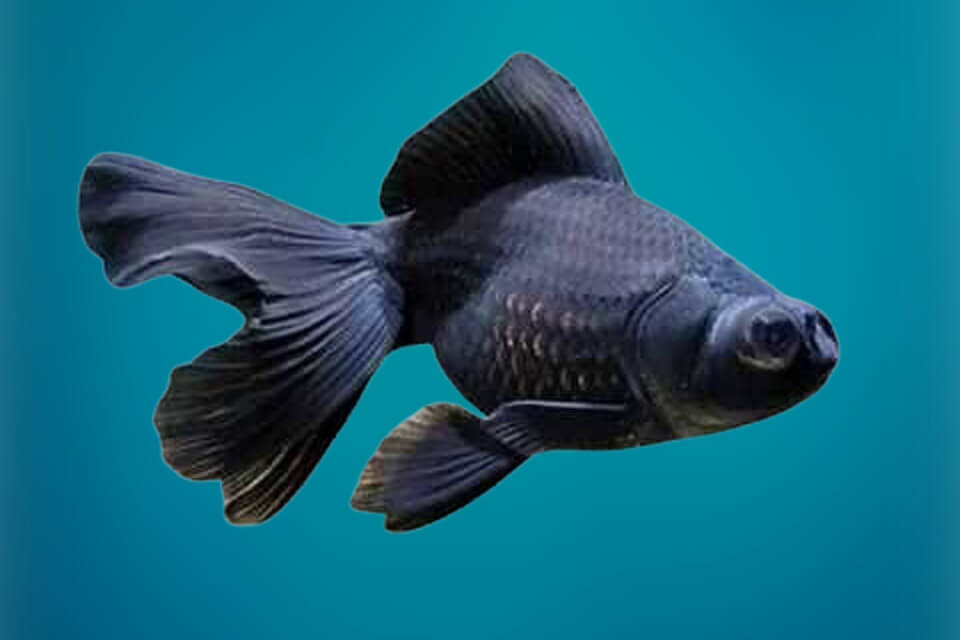
The Black Moor Goldfish is an enchanting and exotic variety that adds a touch of elegance to any aquarium. Its velvety black coloration and distinctive features, such as protruding eyes, make it a captivating choice for fishkeeping enthusiasts.
The deep black color of the Black Moor sets it apart from other goldfish breeds, creating a striking contrast in the aquarium. This unique coloration gives it a mysterious and alluring presence, captivating the attention of onlookers.
The smooth and velvety texture of its scales further enhances its visual appeal, creating a truly mesmerizing sight.
One of the most recognizable features of the Black Moor is its protruding eyes. These bulbous eyes, often referred to as telescope eyes, give the fish a distinct and charming appearance.
They enhance the fish’s character and create a captivating focal point, making the Black Moor a favorite among goldfish enthusiasts.
Caring for Black Moor Goldfish requires careful attention to water quality and a well-maintained tank. They are sensitive to water conditions, particularly poor water quality and high levels of toxins.
Therefore, it’s crucial to provide them with a suitable environment that meets their specific needs. Regular water testing, proper filtration, and diligent maintenance routines are essential for their well-being.
Black Moors are best suited for aquariums rather than outdoor ponds due to their sensitive eyes. The protruding eyes are more vulnerable to injury and can be easily damaged by sharp objects or aggressive tankmates.
In an aquarium, they can thrive in a calm and peaceful community setting, where they can swim comfortably and without the risk of injury.
When it comes to size, Black Moor Goldfish typically reach a length of 4 to 6 inches (10 to 15 centimeters).
However, it’s important to note that the growth rate of goldfish can be influenced by various factors, including genetics, diet, and environmental conditions.
With proper care and a suitable environment, Black Moors have the potential to reach their full size. In terms of Black Moor Goldfish lifespan, they can live for a significant amount of time when provided with optimal care.
On average, they can live for 10 to 15 years, although some well-maintained individuals have been known to exceed this lifespan and live even longer. Feeding Black Moor Goldfish a balanced and nutritious diet is crucial for their health and well-being.
They are omnivorous and thrive on a diet that includes a combination of high-quality goldfish pellets or flakes, as well as fresh vegetables and occasional live or frozen foods.
It’s important to avoid overfeeding, as Black Moors have a tendency to overeat and can be prone to obesity-related health issues.
As I mentioned above the Black Moor Goldfish is a captivating and exotic variety that adds a touch of elegance to any aquarium. Its velvety black coloration and protruding eyes make it a visually striking choice for fishkeepers.
While they require careful attention to water quality and a well-maintained tank, providing the right environment and proper care will reward fishkeepers with their unique beauty and engaging presence.
Oranda Goldfish
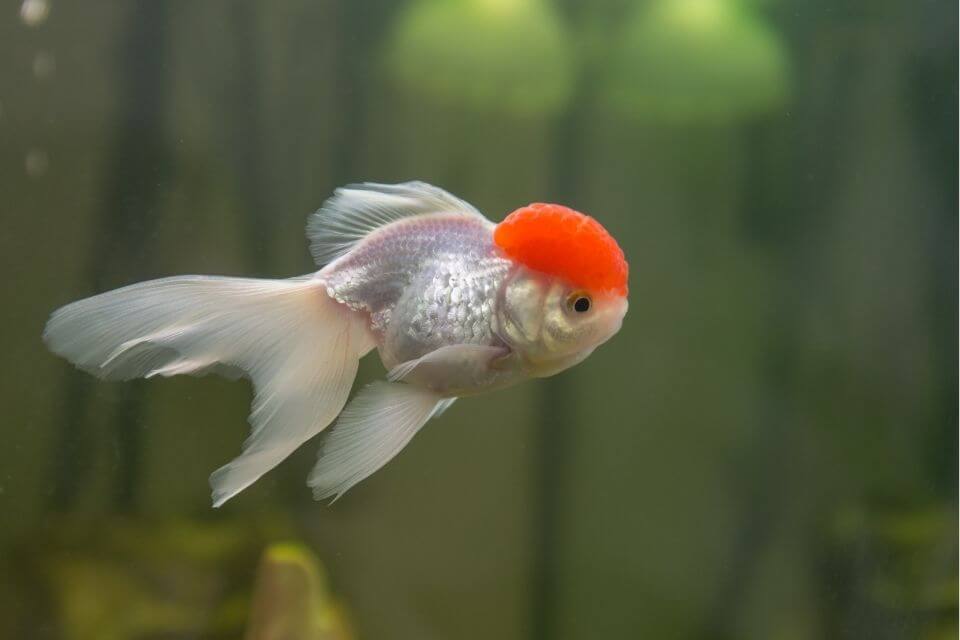
The Oranda Goldfish is a stunning and popular breed, known for its distinctive raspberry-like hood on its head. This variety of goldfish is a favorite among aquatic enthusiasts due to its elegant appearance and charming personality.
If you’re considering adding an Oranda Goldfish to your aquarium, it’s essential to understand its unique characteristics and how to provide the best care for these beautiful creatures.
Oranda Goldfish are easily recognizable by the prominent fleshy growth, known as a wen, on the top of their heads. This raspberry-like hood develops as the fish matures and adds to its visual appeal.
Their bodies are typically adorned with vibrant colors, including shades of red, orange, white, and black, creating a mesmerizing display in any aquarium.
In terms of behavior, Orandas are active and social fish that enjoy interacting with their owners. They are known for their playful antics and can recognize their owners, often swimming to the front of the tank in anticipation of feeding time.
While they are generally peaceful, it’s important to provide adequate space and compatible tank mates to ensure their well-being.
When creating a suitable environment for Oranda goldfish, it’s crucial to consider their specific needs. These fish thrive in spacious tanks with ample room to swim and explore.
A tank of at least 20 gallons (30 gallons is ideal) is recommended for a single Oranda, with an additional 10 gallons for each additional fish.
Maintaining high water quality is essential for the health of Oranda goldfish. They are sensitive to fluctuating water parameters, so regular water testing and filtration are necessary.
Ideal water temperatures range from 65 to 72 degrees Fahrenheit, and a pH level between 7.2 and 7.6 is recommended.
A well-balanced diet is fundamental to the overall well-being of Oranda goldfish. These omnivores thrive on a varied diet that includes high-quality flake or pellet food, supplemented with fresh vegetables such as peas, zucchini, and lettuce.
Feeding should be done in small portions multiple times a day to prevent overeating and support healthy digestion.
It’s important to monitor their feeding habits and ensure that all fish in the tank have equal access to food. Overfeeding can lead to health issues and water quality problems, so portion control is key to keeping Orandas healthy and active.
Shubunkin Goldfish
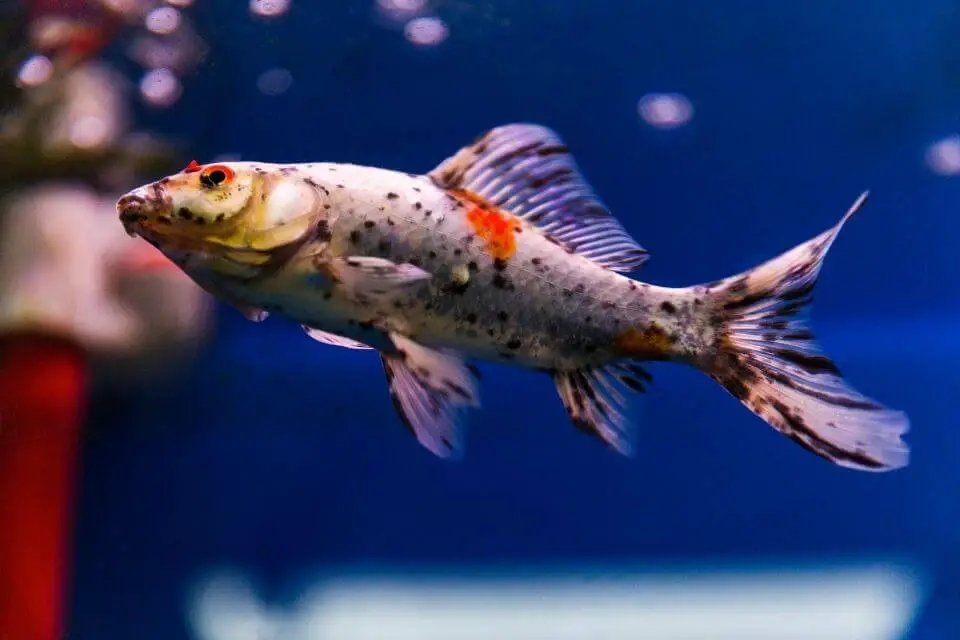
Read the complete Shubunkin Goldfish care guide here.
Shubunkin Goldfish are generally active and social fish that require moderate care and attention. They exhibit playful behavior and enjoy interacting with their tank mates.
They are known for their graceful swimming patterns and can be seen exploring all levels of the aquarium. These fish are peaceful and are suitable for community tanks with other similar-sized, non-aggressive fish.
Shubunkin Goldfish can grow to a substantial size, reaching an average length of 6 to 8 inches (15 to 20 centimeters) in a well-maintained aquarium. In some cases, they may even exceed these measurements, especially in an outside pond or lake.
With proper care, Shubunkin Goldfish can live for an extended period, often reaching 10 to 15 years. Providing a suitable environment, balanced nutrition, and regular health checks contribute significantly to their longevity.
To accommodate their active nature and potential size, it is recommended to house Shubunkin Goldfish in a spacious aquarium.
A tank with a minimum capacity of 15 to 20 gallons is advisable for a single fish, with an additional 10 gallons per Shubunkin. A larger tank helps maintain water quality and provides ample swimming space.
Shubunkin Goldfish thrive in freshwater conditions. The ideal water temperature for them ranges between 65 to 75 degrees Fahrenheit (18 to 24 degrees Celsius).
The pH level should be maintained between 7.0 and 8.4, while the water hardness should be in the range of 5 to 19 dGH.
Shubunkin Goldfish are omnivores and have a varied diet. They can be fed high-quality commercial flakes or pellets specifically formulated for goldfish.
Supplement their diet with live or frozen foods such as brine shrimp, daphnia, and bloodworms to provide essential nutrients. It’s important not to overfeed, as excess food can lead to water quality issues.
Feed them 2 to 3 times a day, offering an amount they can consume in about 2 to 3 minutes.
Pearlscale Goldfish
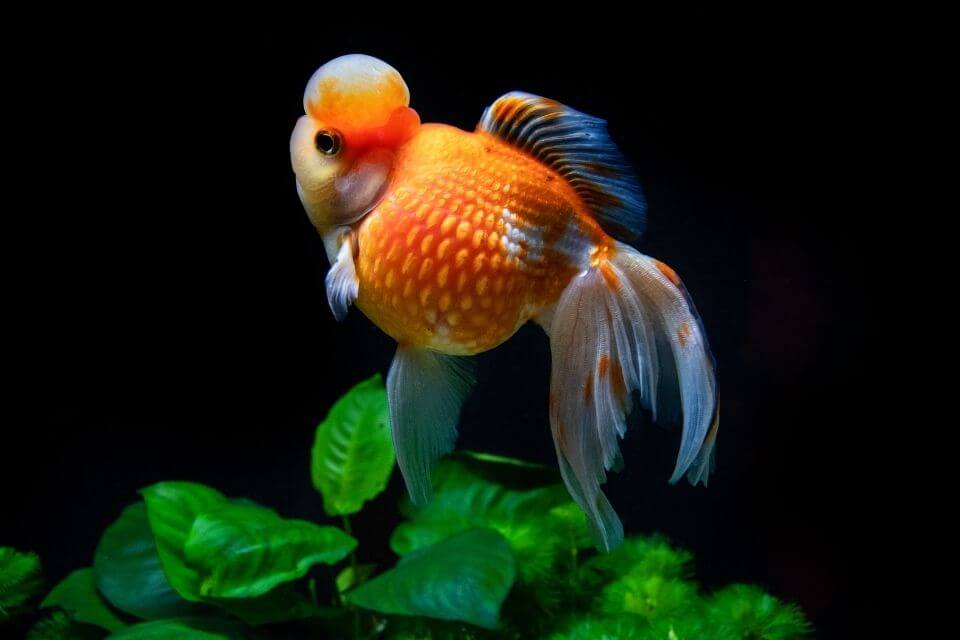
Read our complete Pearlscale Goldfish care guide!
Pearlscale Goldfish, known for their captivating appearance, are generally peaceful and social freshwater fish. They exhibit a lively and playful demeanor, making them a delightful addition to aquariums.
These goldfish are known for their distinctive appearance, characterized by a spherical body shape and raised, pearl-like scales that give them a unique and appealing texture.
On average, Pearlscale Goldfish grow to a length of about 4 to 6 inches (10 to 15 centimeters), with some individuals reaching up to 8 inches (20 centimeters) in ideal conditions.
When provided with proper care, Pearlscale Goldfish can live for an impressive 10 to 15 years or even longer. Their lifespan is influenced by factors such as water quality, nutrition, and overall tank conditions.
Due to their rounded bodies and potential for increased size, Pearlscale Goldfish thrive in spacious environments.
A tank with a capacity of at least 20 gallons is recommended for a single Pearlscale Goldfish, with an additional 10 gallons for each additional fish.
Maintaining suitable water conditions is crucial for the health and well-being of Pearlscale Goldfish. The water temperature should be kept between 68°F to 74°F (20°C to 23°C).
The pH level should range from 7.0 to 8.4, and ammonia and nitrite levels should be consistently kept at zero. Regular water testing and partial water changes are essential for maintaining optimal water quality.
Pearlscale Goldfish are omnivores and require a well-balanced diet.
A high-quality pellet or flake food specifically formulated for goldfish, supplemented with occasional treats such as live or frozen brine shrimp, bloodworms, and vegetables, is recommended.
Feedings should be done in small portions two to three times a day, ensuring that the fish consume their food within a few minutes to prevent overfeeding and water quality issues.
Lionhead Goldfish
Lionhead Goldfish are named for their distinctive head growth, reminiscent of a lion’s mane. These charming fish have a rounded body and come in various colors.
Lionheads require good filtration and regular maintenance to ensure optimal health. Their unique appearance makes them a captivating choice for beginners looking to embark on a rewarding fishkeeping journey.
Ranchu Goldfish
The Ranchu Goldfish is beloved for its rounded body shape, lack of a dorsal fin, and adorable face. These goldfish come in different colors and exhibit a delightful waddling swimming style. Ranchus require clean water and proper nutrition to maintain their delicate body shape, making them a suitable choice for dedicated beginners seeking a visually distinctive companion.
Bubble Eye Goldfish
With their mesmerizing bubble-like sacs under their eyes, Bubble Eye Goldfish are a true spectacle. These delicate fish require attentive care to protect their unique feature from damage. Bubble Eyes are best suited for experienced beginners who are willing to provide the necessary care and maintenance to keep them healthy and thriving.
Celestial Eye Goldfish
The Celestial Eye Goldfish possesses protruding eyes that gaze upward, giving them a celestial appearance. These enchanting fish come in various colors and have flowing fins. However, their eyesight can be impaired, making them more vulnerable to tank hazards. Celestial Eyes are suitable for experienced beginners who can provide a safe and carefully designed environment.
Veiltail Goldfish
Known for their long, flowing tails, Veiltail Goldfish are a true beauty to behold. These elegant fish come in various colors and have a slender body shape. Veiltails require good water quality and a spacious tank to accommodate their long fins. With proper care and maintenance, they make a stunning addition to any goldfish collection.
Pompom Goldfish
Pompom Goldfish are renowned for their distinctive head growth in the form of fleshy pompoms on their cheeks. With their rounded body and flowing fins, these goldfish are visually captivating. Pompoms require diligent care to maintain the health and cleanliness of their head growth. They are best suited for experienced beginners who are ready to commit to their specialized needs.
Final Thoughts
Goldfish come with a wide range of breeds to suit every fishkeeping enthusiast’s preference.
Whether you opt for the classic Common Goldfish, the unique Bubble Eye, or the elegant Fantail, each breed brings its charm and beauty to any aquarium or pond.
By understanding the specific care requirements and dedicating time to maintaining optimal water conditions, beginners can embark on a fulfilling journey of goldfish ownership.
Remember, responsible fishkeeping involves ongoing research, patience, and a commitment to providing the best possible care for these magnificent aquatic companions.



